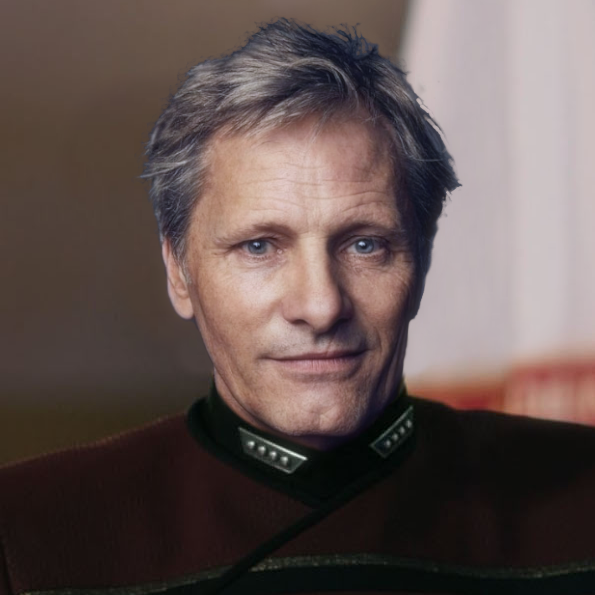“Intercept on the outermost chronometric field lines, T minus ten,” Lieutenant Commander Sena reported from her station aboard the runabout Calvera as she monitored their descent towards Chorad IXa.
“Time to put theory to the test,” Dr. Lisa Hall noted as she glanced back from the conn towards Dr. Brooks, who sat there cool and collected, not a shred of doubt visible on his face.
The mad astrophysicist had reconfigured the runabout’s warp manifold and deflector grid to generate a synchronized chronometric resonance envelope, the shuttle-sized equivalent of the personal chronometric anchors each wore on their forearm. Those devices and this shuttle configuration were both meant to hold a pocket of space stable in time against the chaotic backdrop, and this would be the first true test of the model. If it worked, it would bode well for what awaited them below. If not, they might never even make it to the surface. All of them had seen what happened to the probes, the craters they left behind.
“Threshold in three… two… one…” Lieutenant Commander Sena counted down.
Next to her, Lieutenant Commander Taylor tightened his five-point harness as if readying for a bumpy ride. Not that it would do any good if the shuttle was bisected by a temporal fracture.
“Zero.”
And then, nothing happened. Nothing at all. Or at least nothing perceptible, at first. The shuttle just continued its descent as if it was just another regular transition into the outer layer of the lunar atmosphere. Except, of course, it wasn’t.
“Chronometric shear outside the field is… is like the Kot’baval itself,” reported Voragh as his eyes swept across the telemetry. Even fully aware of the chronodynamic nature of the environment they were entering into, seeing the numbers made his ridges tighten. “External time gradient averages ten microseconds per meter, but it’s not a smooth curvature. Broken into jagged discontinuities, sharp temporal strata that spike by orders of magnitude at meter to kilometer range. Space itself is tearing between moments!”
“Brilliant,” Dr. Brooks beamed as he reviewed the same telemetry the Klingon was staring at. It was unlike anything he’d ever seen. “Just brilliant.”
For the first time, Voragh found himself wavering in confidence while a human feared not. He flipped from a broad sweep to a more localized lens. “On the positive, the envelope is holding,” he added. “Your mathematics have teeth, Doctor. Phase differential is collapsing into a coherent temporal manifold at the field’s edge, harmonics locked in unison with the anchor frequency across the metric interior. Our bubble stands the storm!”
Dr. Brooks’ wizardry had worked, for now.
But while the scientists rejoiced at their success, and the psychologist focused on piloting the runabout, the storm beyond was what captured Lieutenant Commander Taylor’s attention.
He leaned forward, his gaze narrowing as clouds and light broke before his eyes. Wisps of vapor that should have formed smooth contours instead terminated in sharp breaks without cause or reason, and in the distance, vast storm cells froze mid rotation, and then lurched forward again, half a heartbeat out of sequence, before vanishing without a trace.
He squinted, trying to understand what he was seeing. The lunar surface wasn’t moving. It was stuttering. Sunlight from the far off yellow dwarf flickered erratically, bands of day and night overlapping like shattered glass, one ridge gleaming under the midday sun, while its neighbor was drenched in darkness.
“A curious sight, isn’t it?” Dr. Brooks asked, as if sensing his nerves.
“That’s one way to put it,” Lieutenant Commander Taylor murmured.
“The moon cannot agree on its truth,” Voragh chortled. “Much like my own Rite of MajQa’!” A most chaotic experience, that had been, arguing equations with the warriors of his visions, each certain their truth was the only one that mattered.
While Dr. Brooks marveled, Voragh thundered, and Lieutenant Commander Taylor shivered, Lieutenant Commander Sena was focused on her instruments, studying the phenomenon with her typical precision.
The shuttle suddenly shook as it crossed a low-pressure pocket of atmosphere.
The Romulan reported the cause: “Atmospheric telemetry is… inconsistent. Pressure rising and falling in sharp discontinuities, and thermals are equally erratic.”
“Exactly as it’s supposed to be,” Dr. Brooks smiled with delight. “Revel in it, folks. We’ll probably never see anything like it again.” He’d certainly never seen anything like it before.
“Right now, I’m just trying to make sure we see something again,” Dr. Hall replied flatly as the ship shook once more. She saw no magic here. Just a mission. She needed to get them on the ground successfully, and she was flying blind, every attempt to compensate a moment too late, none of the flight controls producing their customary feedback. “Sena, can you chart me a smoother route down to the surface?”
“Sensor readings out of sequence, returns before emissions, echoes from moments that haven’t happened yet,” Lieutenant Commander Sena shook her head. “You’ll have to make do.”
“Alright,” Dr. Hall acknowledged without so much as blinking, her focus completely on what lay before them. “Won’t be the first time.”
The ship shook again, this time more violently.
“Look on the bright side, Lisa,” Dr. Brooks chuckled as he leaned back to enjoy the ride. “According to our dear friend Jax, we’ve already arrived. So why worry? You’ll get us down there. That much we know.” No promises, he thought to himself, that they’d make it off the moon though. That was where things got a bit more uncertain.

 Bravo Fleet
Bravo Fleet








